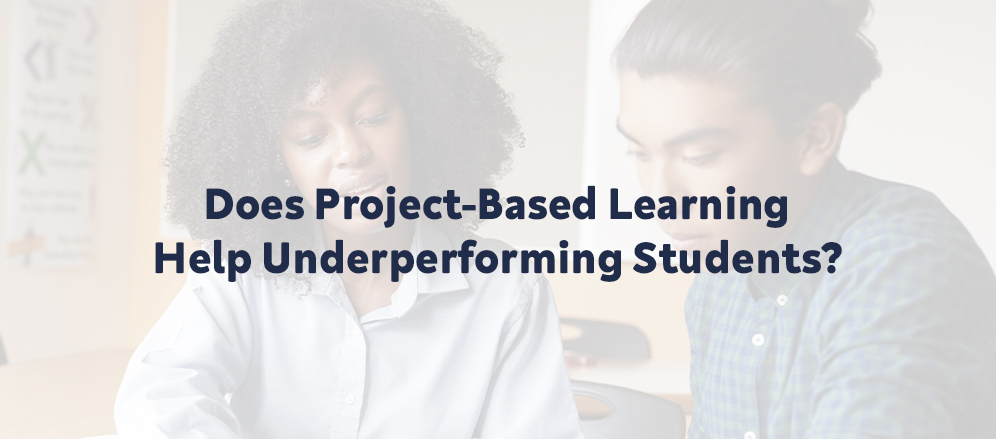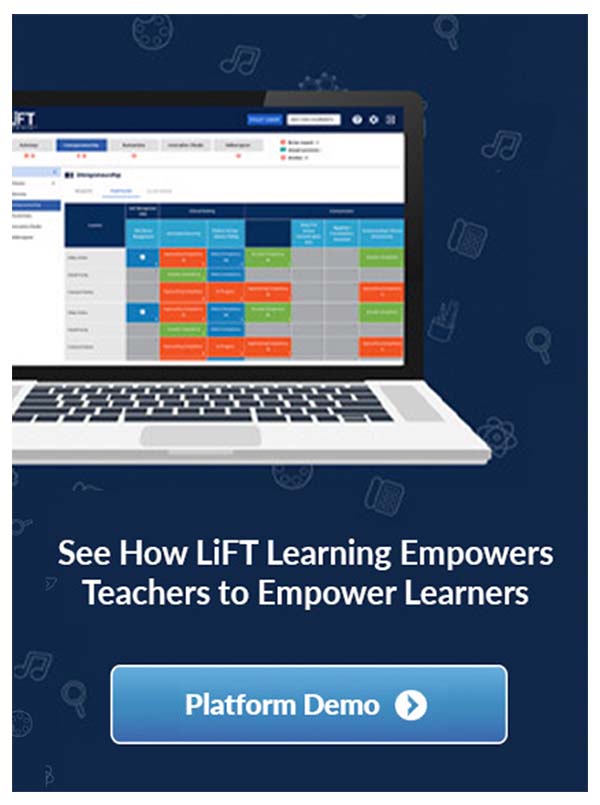Does Project-Based Learning Help Underperforming Students?

While traditional learning works for some students, project-based learning (PBL) is especially beneficial for underperforming students, disengaged, and diverse student populations.
By connecting students to their learning with hands-on activities and encouraging them to work on topics they choose for themselves, PBL engages students with different needs and helps them relate to the material. The incorporation of teamwork and collaboration facilitates the development of social skills and contributes to the students’ emotional development.
At its best, project-based learning takes the whole child’s well-being into account. In so doing, PBL takes a holistic approach to education and finds ways to reduce disparities in the skills and abilities of students from diverse backgrounds.
Studies show that PBL helps diverse learners across disciplines
The OECD Survey on Social and Emotional Skills aims to identify the policies and practices that best encourage skill development in diverse student populations. OECD Research has shown that PBL has a positive impact on diverse learners and underperforming students. According to one study, English language learners did better on a language proficiency test if they were taught in a PBL environment. In diverse 8th grade US History classrooms, students with and without disabilities and honors students all benefited from PBL. Researchers from the University of Southern California demonstrated an improved performance for students from both low and high socio-economic families in urban districts with higher proportions of students from low-income households.
According to a study by researchers from the University of Michigan, Michigan State University, and the University of Wisconsin, a PBL approach benefits students of all racial and ethnic backgrounds, household income levels, and throughout all regions of the state. Underserved students, including English language learners, benefited from authentic, real-world science instruction in the Learning Through Performance (LTP) in Middle School Mathematics and Science Project designed by Stanford University researchers. Teamwork has been shown to benefit all students but especially those from low-income and underrepresented groups.
At JSTEM Academy, a middle school in Converse Texas, the Principal made it a primary goal to implement PBL throughout the curriculum. The school has a student body composed of nearly 80% Hispanic and African American students with 18% identified as English learners and over 70% economically disadvantaged. To address the needs of these students, the approach taken focused on culturally responsive pedagogy allowing students to express their culture through their projects. By incorporating service-learning and civic engagement, allowing students to choose media to match their strengths, and teaching empathy, this program helped diverse students thrive.
Unfortunately, JSTEM Academy is an outlier. Students from families in low-income brackets and from underserved minorities are less likely to receive instruction that emphasizes critical thinking and discussion skills. As the studies discussed above demonstrate, implementing PBL would be a great way to engage these students in their learning and improve their outcomes.
Source: https://thecommonwealthinstitute.org/research/unequal-opportunities-fewer-resources-worse-outcomes-for-students-in-schools-with-concentrated-poverty/
Meeting the needs of diverse students with PBL
Diversity is a fact of life in every classroom. In a typical class, there will be students who are high achievers and students who struggle. Some will have special needs, and others will have suffered from trauma. There might be ESL students, students with disabilities, and students from different ethnic and socioeconomic backgrounds. A PBL approach can improve learning for students in all of these categories because it provides something for everyone.

A PBL approach for special needs students
A PBL approach benefits special needs students by allowing for differentiated instruction in the classrooms. Special education research shows that inquiry-based activities can increase motivation and bring higher levels of achievement in social studies classes. Multisensory instruction and the alternative ways of assessing student progress used in PBL are beneficial for students with special needs. Student engagement through PBL increases retention and improves behavior.
Source: https://docs.lib.purdue.edu/ijpbl/vol3/iss1/4/.

